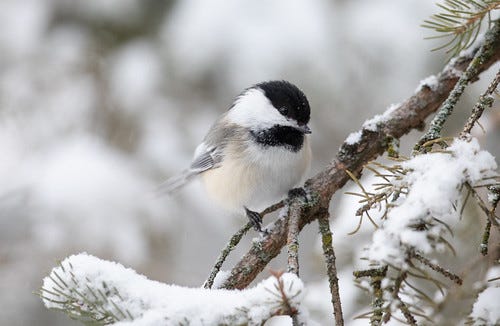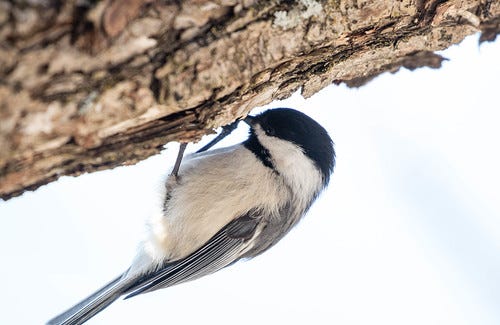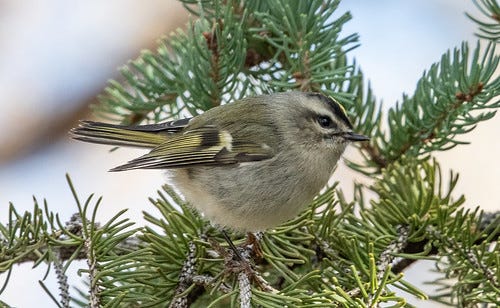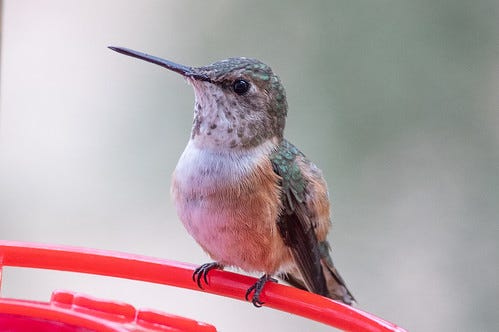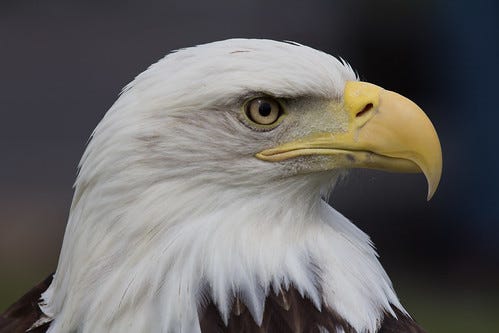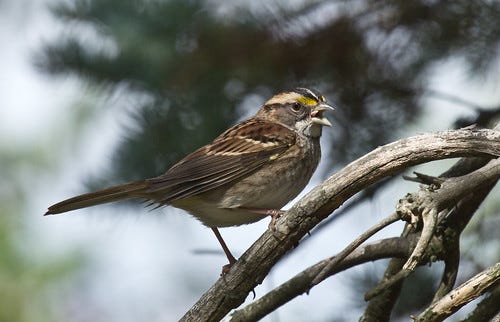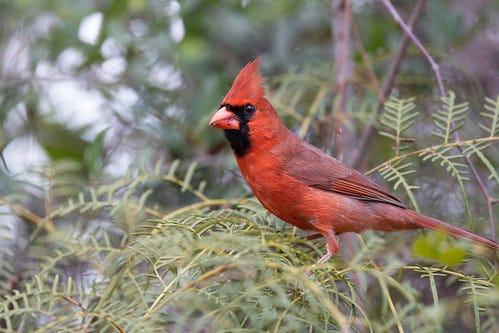Why do birds migrate?
Food is more critical than temperature.
(Listen to the radio version here.)
In the coming weeks, more and more birds will make a long journey southward—many more than filled the skies this past spring before the young of the year were produced.
Bird migration is such a beautiful and reliable phenomenon that it’s hard to fathom how long it took for people to understand as much as we do today. People often cite Aristotle’s belief that swallows buried themselves in mud to hibernate—a belief that survived well into the 1800s—but Aristotle also wrote about cranes traveling from the steppes of Scythia to marshes at the headwaters of the Nile. And three thousand years ago, Micronesians and Polynesians found their way to tiny islands in the vast ocean by paying attention to bird movements. So even long ago, people knew a little about how birds move about, and by the time I started birding in 1975, we understood a great deal about migration related to timing, routes, physiology, navigation, and more. In the 50 years since, technology has allowed us to learn much, much more.
It seems obvious that birds migrate because they want to escape the cold temperatures of winter, and it’s true that many tropical birds cannot survive frigid temperatures. If they evolved and remained entirely within tropical and subtropical environments, as the todies of the Greater Antilles did, they don’t have the dense down feathers that provide insulation against cold, nor can they deposit and then metabolize enormous quantities of fat the way birds must to stay alive during deep freezes.
The Cuban Tody and Black-capped Chickadee are very similar in size, the tody 11 cm long and the chickadee a little longer (12–15 cm). The tody has a longer bill, but the difference in length is mostly due to the chickadee’s much longer tail. Yet even though the chickadee is slightly longer, the tody weighs FOUR TIMES as much as the heaviest chickadee—59 grams compared to 9–14 grams! Beneath the feathers, the chickadee’s body is very tiny and scrawny compared to the tody’s. No need for so much featherweight insulation to survive Cuban winters!
But surviving the cold is only half the problem a Cuban Tody would face in a Midwestern winter. Even before the thermometer plunged to single digits, the tody would starve to death, because insects, especially flying insects and those on the upper and lower surfaces of leaves, provide the vast majority of its food.
Chickadees eat a lot of insects, too, and I once observed one pluck a small moth out of the air, but in winter they feed mostly on seeds supplemented with insect pupae and eggs hidden in the crevices of tree bark and other vegetation.
Golden-crowned Kinglets and Brown Creepers, which both weigh even less than chickadees, are almost entirely insectivorous. In winter they feed on pupae and eggs much more than on moving insects, and only a handful winter this far north.
Rufous Hummingbirds are known to have not just survived winter in northern states but to return in subsequent winters, but the only records are at hummingbird feeders, the feeders often heated and the sugar water often supplemented with protein. Two different Rufous Hummingbirds showed up in my yard in the month of November (in 2004 and 2020); each remained through early December before moving on. I observed them both plucking insects from branch tips of my spruce trees and from stands of native weeds, but they could count on calories from my feeders. Both survived snow storms and single-digit temperatures, and in the end, both moved on at midday after eating heavily.
Birds that specialize on active or even flying insects, including most flycatchers, swallows, and warblers, head to the tropics where they can count on a food supply through winter.
Many Tree Swallows and Yellow-rumped Warblers winter in the southern states and along the Eastern Seaboard rather than the tropics, but they’re not quite an exception, because they have significantly longer intestines than their relatives and produce enzymes allowing them to digest the wax coatings of bayberries and wax myrtle berries. Again, their survival depends more on food availability than temperature.
Most birds who eat fish must leave in winter before ice covers their fishing waters. Sometimes an individual Great Blue Heron or Belted Kingfisher remains in Minnesota through the Christmas Bird Count, but invariably in a spot where there is still open water. Bald Eagles who remain in the north in winter feed mostly on carrion.
Birds who feed mostly on weed seeds and seeds picked up on the ground tend to spend a lot of time at feeders or head to areas where snow won’t cover most of their food sources.
Cardinals move about locally to find better feeding opportunities in winter, but aren’t particularly migratory. They didn’t survive winters in the upper Midwest until snowplows opened up snow-free areas along weed-lined roadsides and railroad tracks, and the popularity of bird feeding greatly accelerated their range expansion north. Food availability, not temperature, was the critical factor.
Northern finches can stick around because they specialize on the seeds of conifers, birches, and other plants that hold onto their seeds well above the ground. Tiny redpolls, which survive further north than most other songbirds, have lots of pouches along their esophagus that allow them to pig out, stuffing both their stomach and those pouches before nightfall so they can keep digesting food, stoking their metabolic furnace, throughout the exceptionally long winter nights of the far north. Redpolls also have more rod cells in their retinas than most birds, allowing them to eat in twilight when it’s too dark for other songbirds.
Food may be the driver of migration, but birds don’t leave because their food is growing scarce. On the contrary, for most species, migration is timed for a period of food abundance. Flycatching species leave earlier than birds eating insects within vegetation or on the ground, and those leave earlier than birds feeding on seeds or berries. Raptors who eat birds time their migrations for when their prey is most abundant, so Sharp-shinned Hawks and Merlins head out starting when the first warblers and flycatchers migrate en masse, but because both species are also adept at catching blackbirds and sparrows, they have a wide window for their migration.
Over the coming weeks I’ll talk more about the rhythms of migration not just seasonally but through a 24-hour period. Why do so many birds heading to the tropics travel by night even though their night vision is no better than ours? I’ll also focus on the many natural hazards migratory birds face, greatly exacerbated by the hazards we humans create that kill millions of birds every fall, and what we can do to minimize the dangers.



